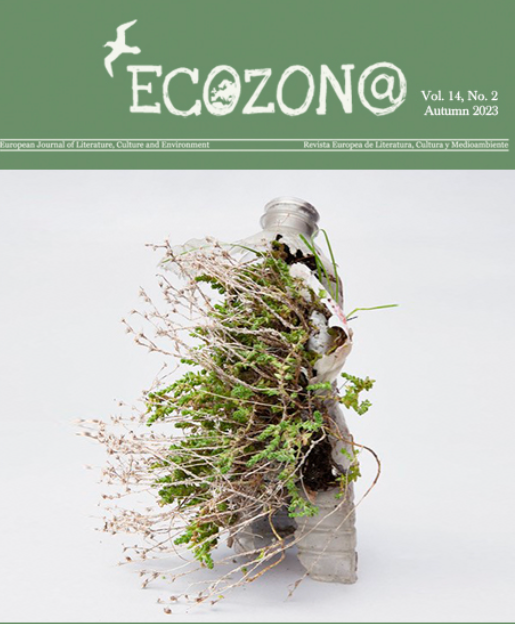
Co-guest editors :
David Lombard (FNRS, University of Liège, and University of Leuven),
Alison Sperling (Florida State University),
Pieter Vermeulen (University of Leuven)
The relation between the aesthetic category of the sublime and the overwhelming realities of the environmental crisis is as obvious as it is contentious. While the term remains a routine part of our aesthetic vernacular, the notion’s intrinsic dualism, anthropocentrism, and political quietism are deeply problematic: for Bruno Latour, the Anthropocene has made the Kantian contemplation of sublime infinity impossible because “the world is no longer a spectacle to be enjoyed from a secure place” (2016: 170); for Jean-Baptiste Fressoz, the Anthropocenic sublime inculcates a “depoliticized fascination for planetary collapse” and obscures the workings of capitalism by picturing it as a geological force beyond human influence (2021: 298). Even critics who want to salvage the sublime in the Anthropocene consider it to be in need of an update: for Timothy Morton, we need “a more speculative sublime that actually tries to become intimate with the other” (2020: 217); for Marco Caracciolo, a viable Anthropocene sublime must affirm the emotive, affective, and kinetic interactions between the human and the nonhuman world and welcome feelings such as “grief, distress, and guilt” (2021: 302–3).
This special focus section takes up and expands on these critiques of the sublime to chart new directions towards imagining modes of the sublime that are better attuned to the challenges of ongoing environmental crises and their attendant social, racial, gender-based, disability-based, and economic forms of inequity. It thus pursues the hypothesis that the supposed stability of “the” sublime, be it rhetorical, philosophical, or artistic, has been and needs to continue to be radically pluralized. For example, new versions of the sublime have been coined to give more attention to radical threats to and changes in environments such as the “nuclear/atomic sublime” (Ferguson 1984; Wilson 1989; Hales 1991; Masco 2006), the “agricultural sublime” (Pollan 2003), the “petroleum sublime” (Hatherley 2011), and the “toxic sublime” (Peeples 2011). This section’s plural and comparative approach asserts itself in different ways: it wants to interrogate and update these as well as other subspecies of the sublime (the “feminine sublime” [Freeman 1997], “material sublime” [Pipkin 1998; de Bolla 2002], “ridiculous sublime” [Zizek and Wieczorek 2000; Shaw 2017], “ecosublime” [Rozelle 2006], “organic sublime” [Outka 2011], “haptic sublime” [McNee 2016], or “racial sublime” [Shapiro 2018]); place the sublime in dialogue with different bordering aesthetic categories (horror, the weird, uncanny, “stuplime,” and “interesting” [Ngai 2005, 2010]); and also leverage the differences between various traditions and genealogies of the sublime (the American wilderness is not the European Alps; the Burkean sublime resists translation to South Africa or Australia; the French postmodern sublime focuses on simulation and [un]presentability rather than materiality).
Such revisions and (re)assessments of the sublime echo concerns with materiality, affects, gender, race, disability, and agency that have been at the core of scholarship in the environmental humanities for (at least) the past decade. Already in 2012, ecofeminist scholar Patrick D. Murphy called for a more “integrational” and “participatory” sublime, as opposed to the Kantian “transcendental” sublime that positions the human subject as safe and disengaged from the observed scene, that would reconcile the body with the mind and “material reality” (90). Acknowledging these efforts to redefine or salvage the sublime, we are interested in contributions that go beyond this well-established critique of the traditional sublime and explore other imaginative ways through which the notion has been deployed or revisited in literary and artistic works. In addition, given that the Anthropocene is originally a geological concept and that the sublime has been used to bridge gaps between science, affect studies, philosophy, and the arts (Hoffmann and Whyte 2011; Gross 2018), we also welcome proposals that investigate Anthropocene sublimes in discourses that are more scientific. Topics of interest include, but are not limited to, the following:
- Analyses of works that extend the affective repertoire of the traditional sublime to account for environmental crises
- Explorations of case studies in which recent avatars of the sublime (e.g., the “toxic,” “petroleum,” or “haptic” sublimes) manifest themselves or applications of these versions of the sublime to literary or artistic works with concerns over environmental crises
- Considerations on the interplay between the Anthropocene sublime and other contiguous aesthetic categories
- Cross-cultural and comparative approaches to the Anthropocene sublime that challenge the eurocentrism and/or ocularcentrism of the notion
- Human and non-human agencies in the Anthropocene sublime
- Investigations into a more speculative, participatory, or integrational Anthropocene sublime
- The relationship between the sublime and other topics, genres, and subfields recently addressed or explored in the environmental or energy humanities or in other fields such as geology or geological engineering (e.g., petroculture, extraction, queer ecology, solarpunk, racial capitalism and the Capitalocene, climate engineering, …)
- Rhetorical approaches that challenge, complicate, or enrich contemporary critiques of the Anthropocene sublime
We invite contributions in English, French, Spanish, and German. Please submit a 300-word abstract and a 100-word bio to the guest editors by February 28, 2024: David Lombard (David.Lombard@uliege.be), Alison Sperling (ans22r@fsu.edu), and Pieter Vermeulen (pieter.vermeulen@kuleuven.be). We will provide feedback on your proposal by March 15.
Final essays for the research article section should be between 6,000 and 8,000 words (including abstract, keywords, and bibliography). Completed manuscripts are due July 15, 2024 via the Ecozon@ website, which also provides a style guide.